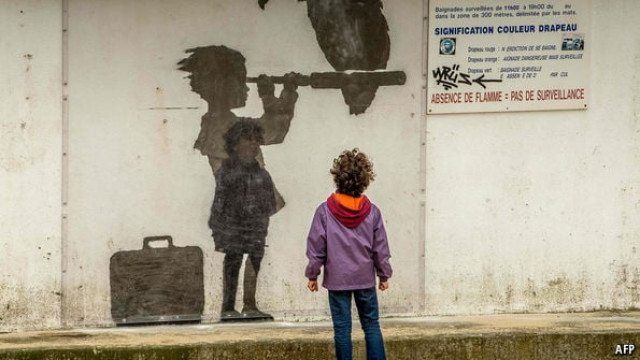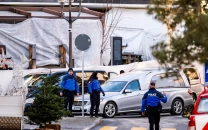Banksy 's identity revealed thanks to mathematics
The evidence pointed towards the same man who was publicly fingered as Banksy in 2008 – Robin Gunningham

PHOTO: AFP
“Geographic profiling” is an examination of the sites that narrows down the possible identities of serial criminals. A mathematical refinement of this idea has implications for pre-empting both terrorist activity and the progression of infectious disease.
Banksy’s ‘cat’ sneaks into Gaza, shows what media won’t
Dr Le Comber learned of geographic profiling from Rossmo, and decided to use it for epidemiology. The two collaborated on a system called Dirichlet process mixture modelling, which is more sophisticated than the criminal geographic targeting (CGT) currently favoured by criminologists.
CGT is based on the assumption that crimes happen near the criminals’ homes and so, involves plotting out an incident map, where the points should surround the criminal. The Dirichlet model, on the other hand, allows for more than one “source”, a place relevant to a suspect such as home, work or a frequent pit stop on a commute, but makes no assumptions about their number; it automatically parses the mess of crime sites into clusters of activity.
Then, for each site, it calculates the probability that the given array of activity, and the way it is clustered, would result from any given source. Through a monumental summing of probabilities across each and every possible combination of sources, the model spits out the most likely ones, with considerable precision, down to 50 metres or so in some cases.
Before using this method for Banksy, Le Comber and Rossmo tested it to identify two anti-Nazi activists who distributed postcards anonymously in Berlin in the early 1940s. An examination of data led them to find the couple’s home and Hampel’s workplace, as well as two underground stations where they changed trains.
Disneyland turns Dismaland: Darker, grittier and grotesque
In Banksy’s case, the two gathered the locations of 140 of his alleged works in London and Bristol. The locations included a pub, playing fields and a residential address in Bristol, and three addresses in London.
After gathering data from all of these locations, the evidence pointed towards the same man who was publicly fingered as Banksy in 2008: Robin Gunningham.
This article originally appeared on The Economist.



















COMMENTS
Comments are moderated and generally will be posted if they are on-topic and not abusive.
For more information, please see our Comments FAQ